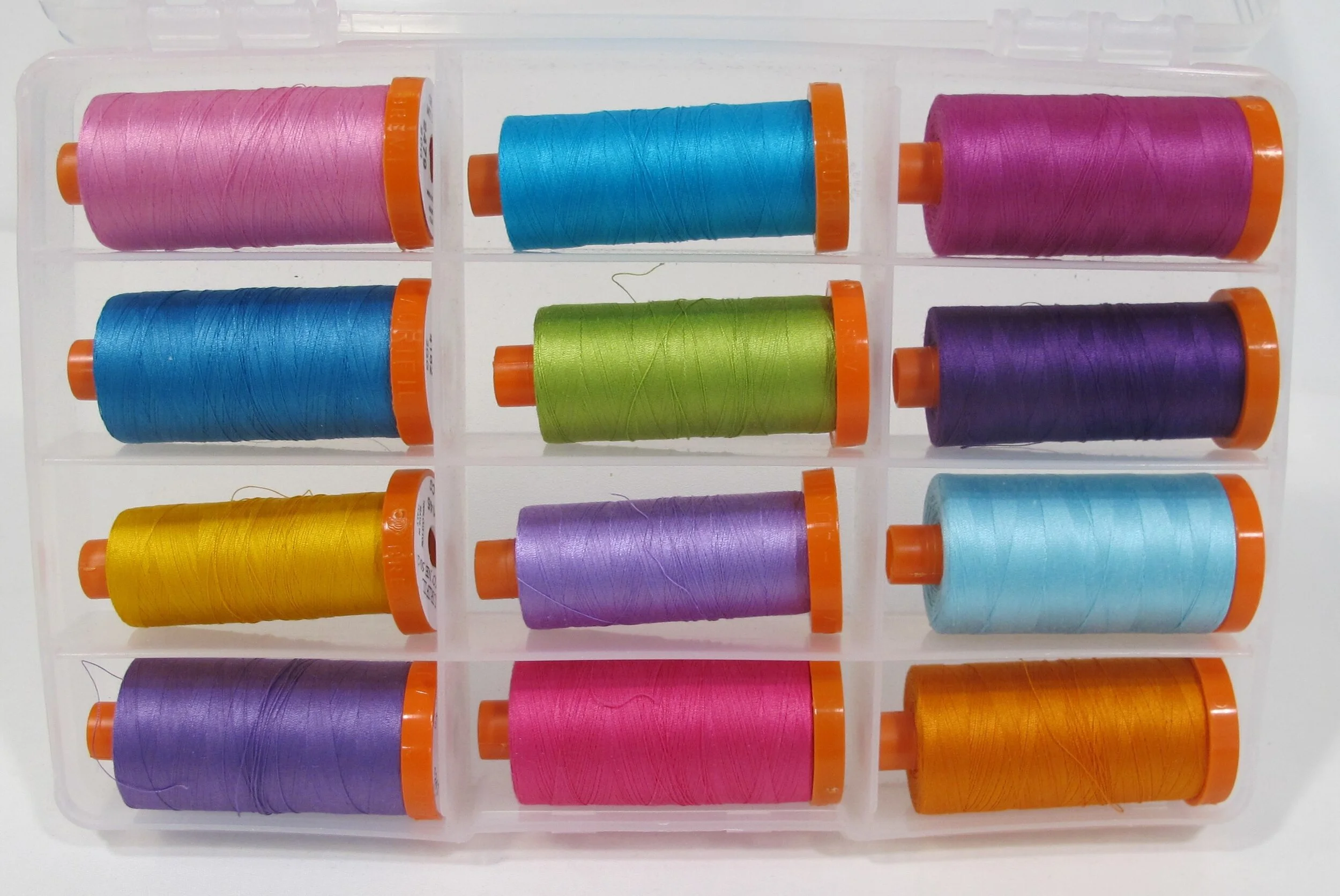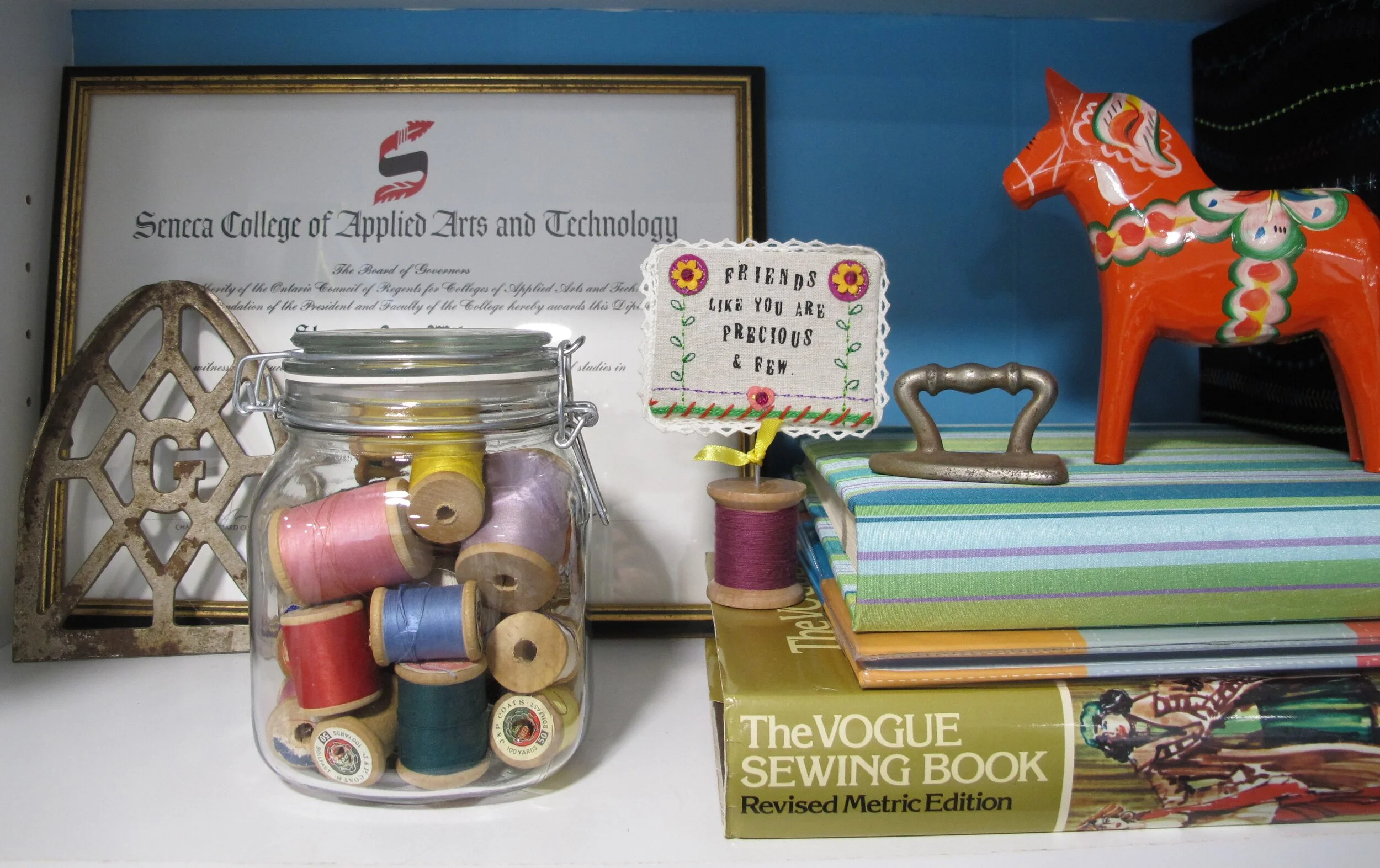I'm a Thread Snob!
Yes, I admit it...I'm a thread snob. I'll explain later by relaying a story from my past sewing adventures, but first I would like to give you a little information about cotton thread itself.
When choosing cotton thread for your quilts buy the best you can afford. I personally use Aurifil Mako 50 weight thread for piecing my quilts because I've found it to be high quality and it produces very little lint. Please do yourself (and your machine) a favour and don't buy cotton thread in the 3 for $1 bin at your local fabric store or (gasp!) the dollar store. The quality is just not there and the amount of lint coming off of it collects in the bobbin case and the tension discs of your machine. That means you have to clean your machine more often...you DO clean your machine regularly right?! (More on that in a future post.)
To see the difference between a good quality cotton thread and a poor quality thread you might want to search online for “the difference between short and long staple fibres”. There are many diagrams showing the difference between the two so it will be easier to understand what I'm talking about since most of us are visual learners.
Short staple fibres in manufactured thread have little hairy bits hanging off of it...these are the bits that can collect in your machine. This type of thread is also very weak because of all the overlapping fibres and can break easily...that's why you don't want to use it in one of your precious quilts that you hope to have in your family for years to come. Unfortunately, I don't have one in my stash to take a picture of and show you.
Long staple fibres, on the other hand, are much stronger and sleeker because there are fewer overlapping fibres. They are perfect for using in your future heirlooms.
If you have one spool of each thread in your sewing kit, hold a length of each thread up to the light and you will definitely be able to tell the difference.
And just so you know...cotton thread has a shelf life. Over time it can be exposed to heat or damp and can actually rot or lose it's strength. So if you still have thread on the old wooden spools that your mom or grandma gave to you put them in a pretty basket and display them, but I don't recommend that you actually use them. I have mine, from my Grandma Wilson's sewing basket, in a large glass jar on a shelf in my sewing room.
Now for my story...
I wasn't always a quilter. My mom taught me how to sew when I was 10 or 11 years old. From the time I was 14 I sewed many of my own garments. I made a couple of tied quilts when I was in my 20's, but that's all I did with my quilting until I had my daughter, Kate, in 1991. I was a stay-at-home mom wanting to stay creative and got into quilting in a big way.
As you can imagine, I had all kinds of thread at home, and since I didn't know any better I used all my leftover polyester (and some cotton) threads for the Dresden Plate quilt that I made for Kate when she was 3 years old. Well...only 13 years later when she was 16, that quilt was falling apart! And it wasn't because I didn't sew it together well, it was because of the thread choices I made years earlier. Wherever I used cotton thread it was just fine, but wherever I used polyester thread it was a disaster. The top and bobbin threads were still looped together as they were sewn, but because the polyester thread was so strong it had chewed right through the cotton fibres of the fabric leaving little flaps everywhere!
So my main piece of advice for you is to use only cotton thread with your cotton fabric when piecing your quilts if you want them to have any longevity. I ended up mending that quilt by stitching everything back together by hand...a very laborious job! Even though I no longer have many polyester threads I do still use them on artsy wallhangings because they won't be laundered and used like my other quilts are. What thread horror stories do you have?



